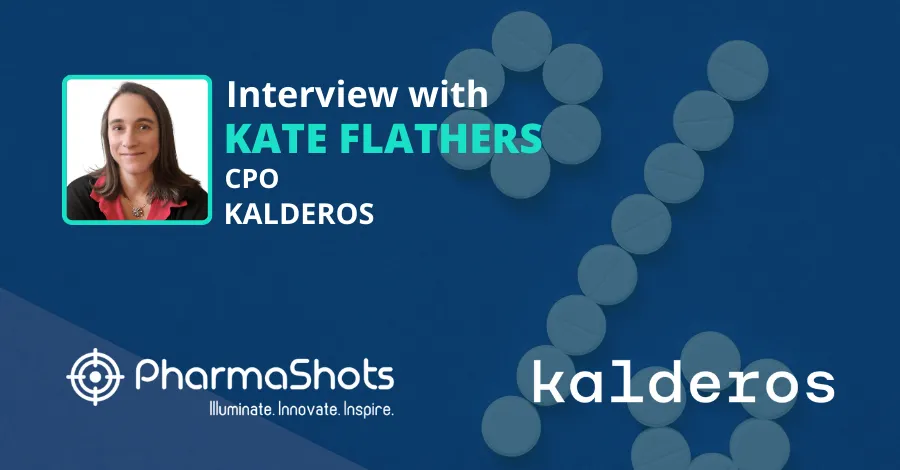
PharmaShots Interview: Janssen's Andrew Greenspan Shares Insight About the New AGA Guidelines Recommending Stelara (Ustekinumab) as a First-Line Treatment Option in Crohn's Disease
In an interview with PharmaShots, Andrew Greenspan, VP, Immunology Affairs at Janssen shared his views on the new AGA guidelines on the medical management of moderate-to-severe Crohn's disease and also highlighted about Janssen's efforts in improving the QoL of patients with CD
- The AGA guidelines assessed the overall benefit of each drug and also compared drugs via a network meta-analysis to assess their efficacy and recommended anti-TNF agents or ustekinumab and suggested vedolizumab as a first-line treatment
- Ustekinumab or vedolizumab has been recommended by AGA in patients who have previously not responded to anti-TNF agents
- The new AGA guidelines did not recommend the biologic natalizumab any further due to potential AEs and the availability of safer treatment options
Tuba: What are the new AGA guidelines on the medical management of Crohn's disease?
Andrew: The American Gastroenterological Association (AGA) regularly reviews its clinical guidelines for accuracy, relevance, and clinical impact in order to provide healthcare professionals with evidence-based recommendations to help guide clinical practice decisions; recently, it published its new clinical guidelines recommending therapies for the management of luminal and fistulizing Crohn's disease.
Crohn's disease is one of the two main forms of inflammatory bowel disease, which affects an estimated 3 million Americans and 2.5 million Europeans. Crohn's disease is a chronic inflammatory condition of the gastrointestinal tract with no known cause or cure.
The organization evaluated the overall benefit and efficacy of available biologic therapies against one another for these guidelines, including assessment of the use of thiopurines, methotrexate, and anti-tumor necrosis factor (TNF)-a biologic drugs for the induction and maintenance of remission in inflammatory Crohn's disease.
At Janssen, we are proud that the AGA's new guidelines highlight STELARA® (ustekinumab) as a recommended first-line treatment option, especially for those who have been previously unresponsive to anti-TNF agents. We believe this guideline supports the safety, efficacy and durability STELARA offers people living with Crohn's disease, as well as Janssen's goal of making STELARA the worldwide standard of care in IBD.
Tuba: Discuss the key takeaways of AGA guidelines updates.
Andrew: The main takeaway of the updated AGA guidelines is that biologics are noted as the most effective treatments for the management of Crohn's disease, with STELARA recommended as a first-line treatment option, especially for patients who have been previously unresponsive to anti-TNF agents. The recommendation can be attributed to the vast body of clinical evidence demonstrating the efficacy and safety of STELARA and is a vote of confidence for an additional advanced treatment for people living with Crohn's disease around the world and the physicians who treat them.
The American Gastroenterological Association highlights that biologics should be used early in a patient's treatment journey, rather than delaying their use until after failure of mesalamine and/or corticosteroids, in patients with moderate to severe or fistulizing Crohn's disease. The guidelines also highlight anti-TNF agents for the management of Crohn's disease.
Tuba: What is the importance of these guidelines for patients with Crohn's disease?
Andrew: People living with Crohn's disease deserve safe, effective, and convenient therapeutic options that can provide both rapid response and lasting remission. Adding to the body of evidence for these options helps us evaluate what may be the best choice for a particular person, especially as we see new advances, like biologic treatments, continuing to offer patients relief from the symptoms of moderate to severe Crohn's disease.
As Janssen strives to provide safe and effective treatment options, we support the American Gastroenterological Association's commitment to keep its members, patients, and the public at large apprised of the most current best practices, through regular review of its clinical guidelines, to provide healthcare professionals with evidence-based recommendations and to achieve the highest possible quality of patient care.
Tuba: What are the treatment goals for Crohn's disease?
Andrew: As individuals with immune-mediated diseases often undergo long treatment journeys and can suffer for years before receiving an advanced or proper treatment, I'm always energized by the Janssen team's work to drive innovation every day and help those living with these diseases.
This is especially true in the area of Crohn's disease; as there is currently no cure for Crohns disease, a focus on clinical response, preventing flare-ups of symptoms, and remission is paramount when considering a patient's treatment goals.
Tuba: Discuss the study designs and outcomes from the SEAVUE study.
Andrew: Until now, there were no head-to-head trials comparing the safety and efficacy of the leading prescription biologics that treat Crohn's disease. In the absence of direct head-to-head evidence, a multitude of indirect comparisons are often used to evaluate therapies this can create uncertainty among physicians when determining which course of treatment may be best for their Crohn's disease patients in the first-line setting.
To help physicians and patients make more informed treatment choices, we boldly conducted the first head-to-head Crohn's disease trial in bio-naïve patients with STELARA and adalimumab therapies; namely, SEAVUE was a multicenter, randomized, blinded, parallel-group, active-controlled study in adult patients with Crohn's disease.
- The primary endpoint was clinical remission at 52 weeks defined as a CD Activity Index (CDAI) <150.
- Major secondary endpoints were:
- Corticosteroid-free remission
- Clinical response =100-point CDAI decrease from baseline
- Remission in patient reported CDAI components (PRO-2 symptom remission: abdominal pain (AP) mean daily score =1 and stool frequency (SF) mean daily number =3)
- Endoscopic remission (SES-CD score =3/0 for pts with BL score=3) at week 52
- Clinical remission at week 16
While STELARA did not achieve statistical separation from adalimumab in the trial, it demonstrated high rates of clinical efficacy and clinical remission.
Tuba: What were the key points of the abstracts presented at DDW 2021?
Andrew: The SEAVUE data showed treatment with STELARA demonstrated high rates of clinical remission, corticosteroid-free remission, clinical response, and endoscopic response through one year in biologic-naïve patients with moderately to severely active Crohn's disease. However, it did not demonstrate statistical separation from adalimumab.
- STELARA-treated patients experienced a 64.9 percent clinical remission rate at one year, with adalimumab at 61 percent.
- The majority of patients (60.7 percent) achieved corticosteroid-free clinical remission with STELARA at one year (57.4 percent with adalimumab).
- STELARA achieved 72.3 percent clinical response rate at week 52 (adalimumab at 66.2 percent).
- Results for STELARA (56.5 percent) and adalimumab (55.4 percent) achieved PRO-2 symptom remission.
- At week 16, 57.1 percent of STELARA-treated patients achieved clinical remission (60 percent for adalimumab-treated patients).
- The trials discontinuation rates prior to week 52 were 15.2 percent for STELARA-treated patients (and 23.6 percent for adalimumab-treated patients).
- Discontinuation due to adverse events were 6.3 percent for STELARA-treated patients and 11.3 percent for adalimumab-treated patients, respectively.
- Adverse events were consistent with STELARA's established safety profile.
Tuba: Discuss Janssen's efforts to improve the QoL of patients with CD.
Andrew: Janssen is committed to relentlessly advancing care for those living with chronic, difficult-to-manage immune-mediated diseases. Inflammatory bowel disease, encompassing Crohn's disease and ulcerative colitis, is a key area of focus for Janssen. Since introducing the first TNF inhibitor to the market in 1998 for the treatment of Crohn's disease, we changed the inflammatory bowel disease treatment paradigm and remain focused in this disease area.
At Janssen, we are investing significantly in R&D to usher in a new era of treatment for these diseases; we also continue to generate new scientific evidence for our current portfolio of leading treatments. While we are invested in the scientific and medical innovation, our prioritization of the patient journey does not stop there. We created additional resources to be there for every step of the patient journey by creating programs such as Nurse Navigators through Janssen CarePath, where personalized and dedicated support is provided to help individuals start and stay on prescribed therapy. From education on our therapies, such as STELARA, to personalized support with providers and financial assistance options. Janssen also created IBD Social Circle (IBDSC), a community of healthcare professional, patient and caregiver advocates who are dedicated to supporting and educating the IBD online community through sharing resources, personal stories and thoughtful insights.

Andrew Greenspan, MD is Vice President of Immunology Affairs at Janssen, overseeing medical affairs across a range of diseases, including rheumatoid arthritis, Crohn's disease, ulcerative colitis and psoriasis. He has co-authored 35+ peer-reviewed articles, graduated Magna Cum Laude from Columbia University and earned his medical degree from Harvard Medical School

This content piece was prepared by our former Senior Editor. She had expertise in life science research and was an avid reader. For any query reach out to us at connect@pharmashots.com














